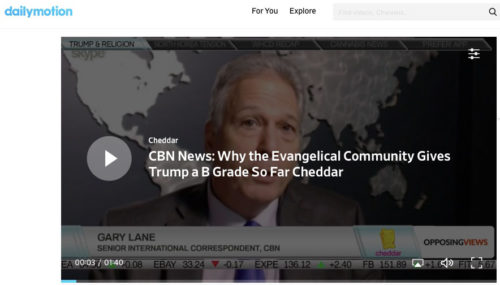The French video platform Dailymotion is a fraction of Google’s size – YouTube’s 1.5 billion-plus monthly viewers dwarf Dailymotion’s 300 million.
But scale isn’t stopping the company from repositioning its platform to woo US advertisers and publishers from the dominant video-sharing site.
Breaking into a video market ruled by streaming video services such as Netflix – not to mention the duopoly – is a tall order for Dailymotion, which is under pressure to improve revenue and grow audiences.
Since acquiring a majority stake in Dailymotion in 2015, the French media conglomerate Vivendi has invested more resources to clean up Dailymotion’s video supply.
It’s shifting away from predominantly user-generated content to forge more premium publisher partnerships (including closer collaboration with musical artists via Vivendi subsidiary Universal Music Group), and it has relaunched its site and app to improve video discovery.
Dailymotion signed on Vice and CNN as content partners over the summer, and just added BBC, Cheddar and Billboard.
The business news network Cheddar, which aims to be the CNBC for millennials, began partnering with Dailymotion four or five months ago, and said views were strong from the outset.
Since the relaunch of its platform and signing new content partners, Dailymotion claims the volume of video plays per session is up 80%.
“The draw there is they have the platform to reach an audience and demographic that’s interested in the business news we’re putting out every day,” said Paul Dousset, director of audience development for Cheddar. “We’re expecting even more of an uptick in traffic following their revamp.”
Dailymotion also claims it can package more insights for publishers than other video portals because of its tech backbone.
 “We see ourselves as an ad tech company, not just a video platform,” said Guillaume Clement, chief product and technology officer for Dailymotion.
“We see ourselves as an ad tech company, not just a video platform,” said Guillaume Clement, chief product and technology officer for Dailymotion.
“When we talk about premium advertising experiences, we’re not just talking about ads, but new products, formats and ways to monetize around our platform.”
Dailymotion has its own video player and evolved its ad stack to meet new buyer demands.
It formerly used the video supply-side platform LiveRail, but when Facebook shuttered it, Dailymotion scrambled to find a replacement.
Dailymotion chose Comcast/FreeWheel’s StickyAds for ad serving and yield management.
Dailymotion manages its own connections to the buy side and doesn’t rely on StickyAds to structure contractual agreements with demand-side platform partners.
“We’ve maintained a strategy of creating direct connections to the buy side, including The Trade Desk, DBM and MediaMath,” said Bichoï Bastha, chief ad tech officer for Dailymotion. “We want all big ad-buying platforms connected directly to us so we can transact with them programmatically based on different specificities around Dailymotion inventory.”
Dailymotion’s redesigned video product is built around specific verticals, channels and categories of advertiser demand.
“The buy side has evolved from buying in bulk to being more precise in targeting and figuring out how to accrue that programmatically,” Bastha said. “Agencies and advertisers are executing more private marketplace deals on specific topics, data segments or around certain ad formats, and we’re growing our number of [PMPs with] guaranteed delivery.”
Increasingly, it’s capturing data points from its player and combining that viewership consumption data from Dailymotion.com and the Dailymotion app with data from across its publisher network.
Those data points help Dailymotion dig deeper into the user journey to see what types of video content viewers consume both on and off its platform to improve recommendations on the consumer side, as well as its insights for advertisers.














